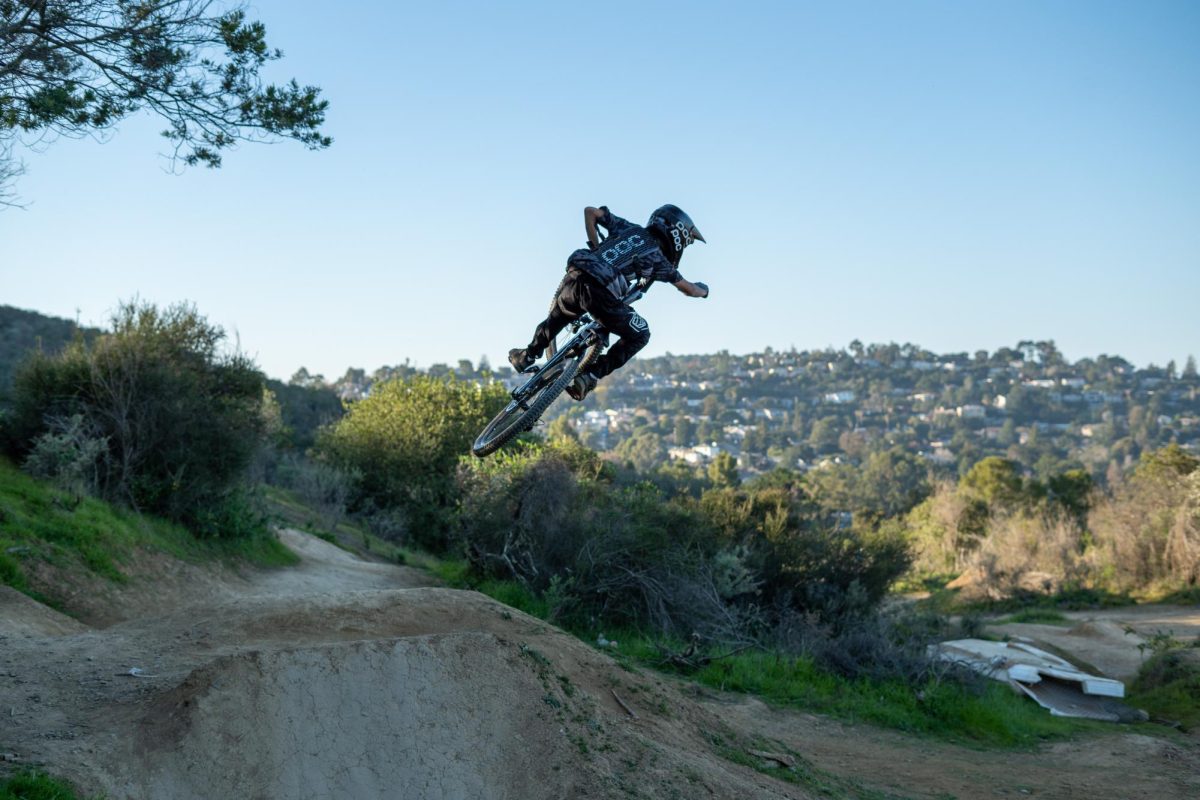As junior Rohit Sengupta tears down the dirt trail on his mountain bike, still recovering from multiple injuries, he accelerates with a fearless determination to gain enough speed to win the race. Suddenly, he wipes out and slides 100 feet down the trail before coming to a stop, leaving him with a massive scar on his left shoulder.
While injuries may deter many people from doing high-thrill activities, Sengupta, like many students who enjoy them, said he still mountain bikes every day because he enjoys learning more skills and doing different jumps.
“When I crashed, I was getting that adrenaline rush. I didn’t feel any pain,” Sengupta said. “In fact, I felt stoked, and I had this good feeling like, ‘I crashed. I’m gonna get back up again and repeat the stuff I was doing,’ because you have a good feeling whenever you do something new.”
AP Psychology teacher Chris Farina said high-thrill activities provide short-term little hits of adrenaline, dopamine and other chemicals that help people feel good in the moment.
“Having some degree of thrill-seeking stimulation just helps people feel happy about their lives and less bored, and so it gives them that degree of pleasure (and) excitement,” Farina said.
Freshman Maria Uribe said she enjoys the adrenaline rush that comes from a similar high-thrill activity –– riding roller coasters. She said she often goes to theme parks due to the feelings of excitement and invigoration that she experiences after going on rides.
“When you go with friends, you just try to enjoy and scream as loud as you can,” Uribe said. “My first time on the (Railblazer at Great America), I went with my best friend. I had no idea there was a super big drop, so I was nervous. We were both like, ‘No, we want to get off. We’re scared,’ and then (the drop) happened. Then, we were like, ‘Oh, we want to go again.’ So we did.”
Farina said many people intuitively seek out some sort of stimulation. Many high thrill activities, such as roller coasters and mountain biking, provide that.
“(Roller coasters are) one way in which you can get a degree of excitement, a degree of thrills and still have it be safe and controlled,” Farina said. “Your brain kind of perceives (fear) as excitement.”
Sengupta said he enjoys mountain biking due to the adrenaline rush and euphoric feeling.
“If you’re going skiing, mountain biking, snowboarding or (doing) any extreme sport, you get the adrenaline rush, which feels good,” Sengupta said. “And based on my experience from mountain biking, it sends you chills sometimes.”
Farina said thrill-seeking behavior in humans is an evolutionary benefit because having members of a community who are genetically predisposed towards adventurous behaviors is good for the community’s health overall.
“They’re more likely to try new things out even if it is more risky, and trying new things out can confer a lot of benefits to the community if they discover something that’s really useful,” Farina said.
Sengupta said that although he has gotten hurt multiple times, he always returns to do high-thrill activities.
“I’m addicted to mountain biking,” Sengupta said. “It makes me feel proud of myself because I think without extreme sports, you basically find no meaning in life. Mountain biking for me is a way to escape reality and just embrace that euphoric feeling of being happy and finding worth.”


